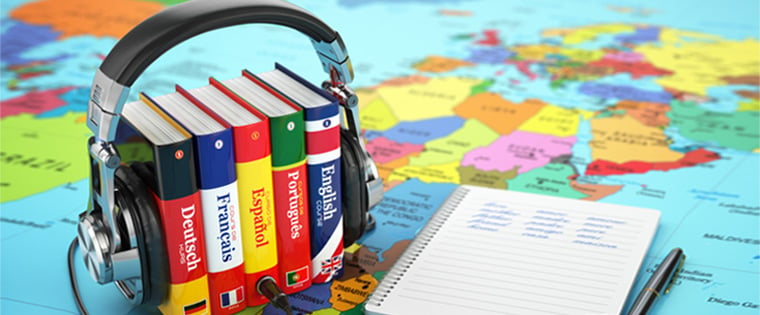E-learning Elements that Can Be Translated – Secrets to Cut Translation Cost

Large organizations in today’s global market have multilingual employees hailing from different nations and all of them may not be equally proficient in the English language. This has indeed made the rolling out of a consistent and accurate training program challenging. However, in a rapidly growing market, there is no escape from employee training and development. So, what is the most effective method to tackle this situation?
If your organization has already adopted digital learning, then the solution is quite simple. Digital courses can be easily translated into the native languages of global employees, and many corporate players have adopted this method as a vital practice. To leverage the benefits of e-learning translation, let us have an overview of the different elements of an e-learning course that can be translated, and the best practices to be followed while course development to cut down translation cost.
1. Onscreen Text
This is the core course content that forms the ‘connect’ with your learners and imparts them primary understanding of the subject matter. Even amidst the high-end graphics and audio-visual elements of e-learning, the significance of text has not lost its sanctum.
However, at times to get our point across to learners, we tend to overuse text. Remember, the translation process is charged by word count. Lesser the number of words, lesser the cost. Avoid using abbreviations (such as i.e. or e.g.) as they may lose their meaning when translated. Similarly, keeping the language of your course simple results in fewer errors, saving translation time.
Another important aspect that needs to be considered while developing the content for your e-learning course is that translation is a subjective affair! What I mean is, something that looks appropriate to a group of learners may not look the same for another. Hence, avoid the extensive use of jargon, phrasal words, and idiomatic expressions that do not translate well and result in inaccurate and poor translation.
2. Graphical User Interface (GUI)
Graphic components such as buttons (Play, Replay, Pause, Next), the progress bar and menu icon of an e-learning course that offer the learner a trouble-free navigate constitute the GUI of the course. Imagine yourself in a new country. You need to figure out the location of your friend but the street names are written in a language unfamiliar to you. Won’t you feel lost? Similar will be the condition of a learner in an e-learning course if they are unable to read the GUI buttons. Thus, to ensure the learner can freely explore the course, it is necessary to translate the GUI of your e-learning course into their native languages.
However, the elements in the GUI appear frequently throughout a course. You can leverage the benefits of technology by using a ‘Translation Memory Tool’ that saves the words and phrases which recur across a course into its memory. Each time a term repeats, the tool reminds the translator that it has been translated. Checking whether the term matches the new context, the translator can go ahead without repeating the translation. This helps in providing consistency to your course and reduces translation cost.
3. Video/Audio Transcript
Video and audio are two essential components in an e-learning course. But to cut down the translation cost, reduce them to necessary instances. Make your videos self-explanatory with minimal onscreen text and audio so that the translation process gets easy.
Subtitling is the cheapest and most effective means of translating videos. However, ensure your translator has prior experience with subtitling videos. This is because translating video is quite different and difficult than translating a written document. People can always read only at a certain speed; you cannot put a chunk of text on a screen that stays for two to three seconds.
Similarly, to cut down the cost on audio translation, have only the main points in the audio and keep the audio clear and concise.
4. Text on Images
Dynamic graphics and striking images make your e-learning course more appealing to learners. However, if you have text as part of your image, the image will have to be edited for translation, especially if the source files are unavailable. So, the best practice is to separate the text from your image. This will help you to translate text easily and quickly.
5. Feedback Pop-ups
Feedback pop-ups are an essential component to let learners know whether they are right or wrong, and reinforce knowledge. To keep the cost minimal, keep feedback to the point and avoid extraneous explanation.
In addition to the above-mentioned elements, there is a hidden element – the ‘course description’ that needs translation. It is a small description of the course learners would see while viewing the course on an LMS. Also, ensure your LMS support multilingual courses. It must support multiple file formats for audio and video integration and must have the provision for content expansion. To generate a quality course in quick time and low cost, keep the content culture-neutral and perform an extensive quality check before hosting it on the LMS.





